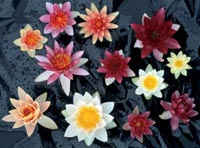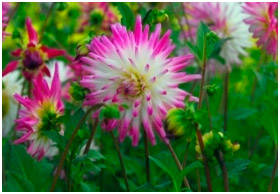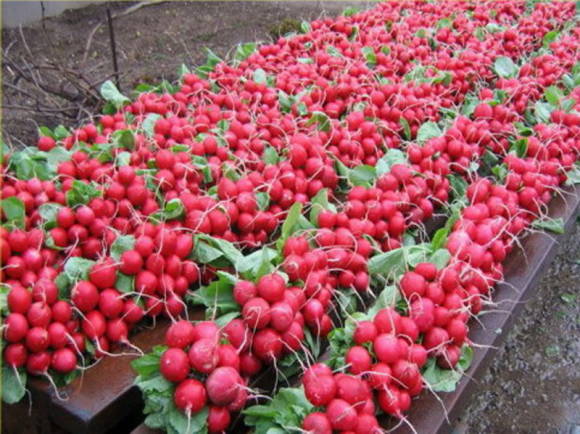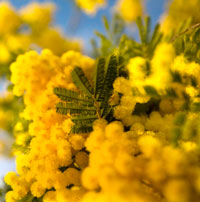
Aronnik will not only decorate the site, but also give you free time, which can be spent on something more useful, because he practically does not require personal care. The arum will allow you to save space - it will successfully grow in the shady part of the site, where neither vegetables nor fruit plants will give a normal harvest.
Aronnik will definitely not disappoint you, and lovers of strict landscapes, devoid of plants spreading over the site, and unusual flora that really fascinate, will also like it. Few plants can so successfully combine bright green and purple shades, have flowers of such an exotic shape that from a distance resemble the head of a fabulous dragon ...
As for the underground part of the arum, it is a tuber, or rather, a tuberous rhizome.
In Russia, arum is grown either as an annual garden crop, or as a perennial, but placed in a pot and exhibited in the garden during a warm period, or kept exclusively at home.
If you want to grow it as a perennial plant, then you can also succeed, because some types of arum can even endure the harsh winters of the center of Russia under cover.
An interesting feature of the arum is that its leaf blades open after the plant finishes flowering, and it begins at the very beginning of June or the end of May.
It is rather difficult to describe the “flower”, but we will try. It is a blanket, which is twisted around a very dense inflorescence-cob, is about 40-45 cm long and about 10 cm wide. This blanket is equipped with a sharp tip and a rather filigree edge. It’s just this veil or bract, as anyone can understand, and gives the feeling that there’s some kind of fabulous animal in front of you. Its color is also surprising, in some species it is olive green, in others it is bright purple.
Immediately after flowering, leaf blades begin to form, they are also unusual, similar to those in southern plants, often complex, dissected or finger-like, bright green in color, with small specks. The leaf blades rest on a long petiole, often reaching half a meter in length.
A little later, around the middle of summer, the ear with scarlet or orange fruits is finally formed, which makes the plant even more unusual.

In the nature of the south of Russia, you can most often find the Italian arum in the culture (Arum italicum), however, it also does not tolerate our winters very well and requires a good cover (spruce branches in combination with sawdust or two layers of non-woven covering material). It does not bloom in Moscow.
The most winter-hardy is the spotted arum (Arum maculatum), although this plant is more modest in size and therefore slightly less showy.
One of the most beautiful is the elongated arum (Arum elongatum), it has spear-shaped leaf blades, with lateral lobes slightly curved backward and a very long peduncle.

Growing
The soil... All these species will grow well and bloom gorgeous on soils that are air and permeable, sufficiently drained, nutritious. If possible, choose a place for them with well-warmed soil, necessarily devoid of stagnant irrigation, melt or rainwater.
Illumination... As for the lighting, then, as we already mentioned, you can choose the most shaded part of the site, because this is a real shade-loving culture.
Landing... When planting, tubers must be buried 7-9 cm, leaving a distance between them equal to 30-35 cm.
Care... After planting, which can be done both in the fall (until the end of October) and in the spring (until the end of April), be sure to water the plant and the soil around it (2-3 liters of water) and mulch with humus (literally a centimeter thick).In the future, you need to monitor soil moisture, sometimes watering plants and weeds - removing them, that's all the care.
Closer to winter, when the temperature becomes stably cold (usually closer to mid-November), it is necessary to cover the plants by sprinkling foliage (or sawdust) on them with a layer of 10-15 cm and pressing it with spruce branches - this is the best option. You can use a non-woven covering material by spreading it in two layers.
 |  |  |
Usage
Aronnik is just perfect for decorating any part of a shady garden. You can safely decorate recreation areas with this plant, it will always attract attention. It can also be used in combination with chrome elements of garden buildings or fences that are currently fashionable. It will show itself in all its glory and in shady rockeries, in search of plants for which designers sometimes spend a lot of time.
In families with children, it is necessary to think about isolating the plant. Not only bright berries, but also any parts of arum are poisonous. Their use can result in unpleasant consequences, from vomiting to seizures.
Photo by Rita Brilliantova and from the Greeninfo.ru forum







